Caught in The Frying Pan
36.120367, -114.799066
I finished up work early in the afternoon, and thought it would be nice to take Panda to Lake Mead. I haven’t been back since the water crisis of the past few years and wanted to see the lake again–before it turns back into a river... The drive was less than an hour from Las Vegas. I chose to go on the North side of the lake to Crawdad Cove, entering through Lake Mead Blvd. At the payment booth (a day pass is usually $25), the booth operators shut down his window and let everyone, myself included get in for free. Nice!
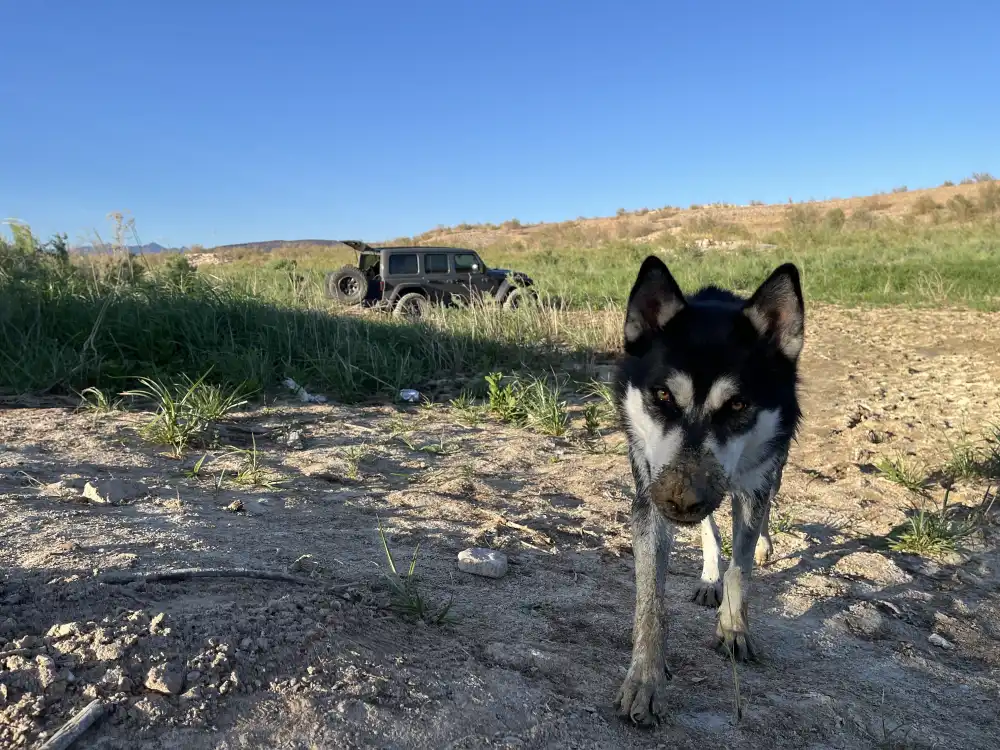
Panda walking toward the camera on a dry, sandy patch of ground with some grass and small rocks scattered around. He was just on the shore, digging in the muddy water, evident by his dusty paws and muddy nose. In the background, my Jeep Rubicon is parked on a mud pond, surrounded by green grass and desert hills, under a clear deep-blue sky — as the sun sets over the desert landscape, the temperature remains over 100 degrees Fahrenheit. This photo is one of my favorites of Panda. It captures an adventurous, outdoorsy moment full of curiosity and personality.
Crawdad Cove
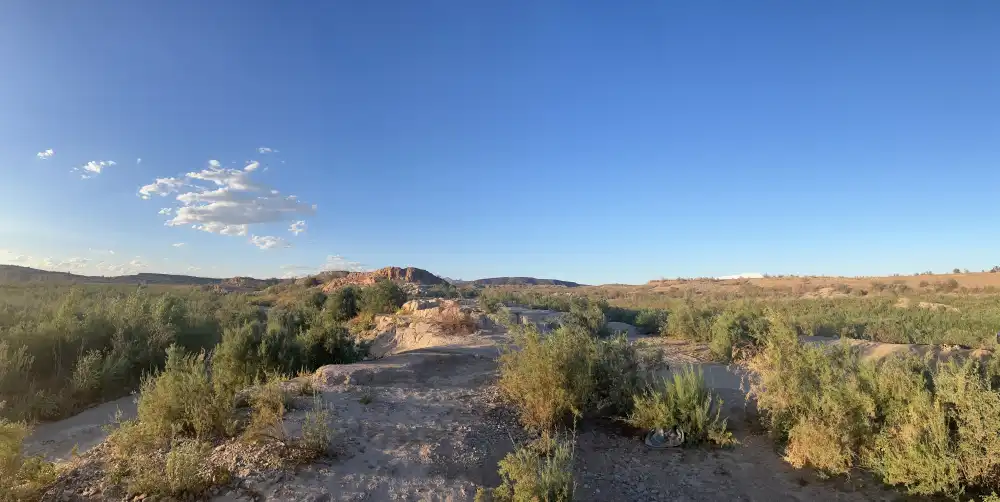
Standing at Crawdad Cove, the scene stretches wide under a perfect desert sky — a deep blue fading into soft gold near the horizon. The land is open and raw, with patches of green shrubs and low desert vegetation tracing the contours of the dry wash that winds toward the lake. In the distance, the red and tan cliffs catch the evening light, glowing with that unmistakable Nevada warmth.
The ground underfoot is pale and sandy, scattered with small rocks and driftwood from higher water levels long past. There’s a quiet here that feels almost endless — just the hum of the breeze, the rustle of brush, and the distant glint of Lake Mead beyond the horizon. It’s the kind of place that feels untouched, a hidden pocket of stillness tucked deep within the desert’s expanse.
The views were scenic–I should have taken more pictures! At the bottom of Crawdad Cove, to my surprise, all the good parking spots were taken. Down by the water, I drove off to the right, but the water looked stagnant and lifeless.
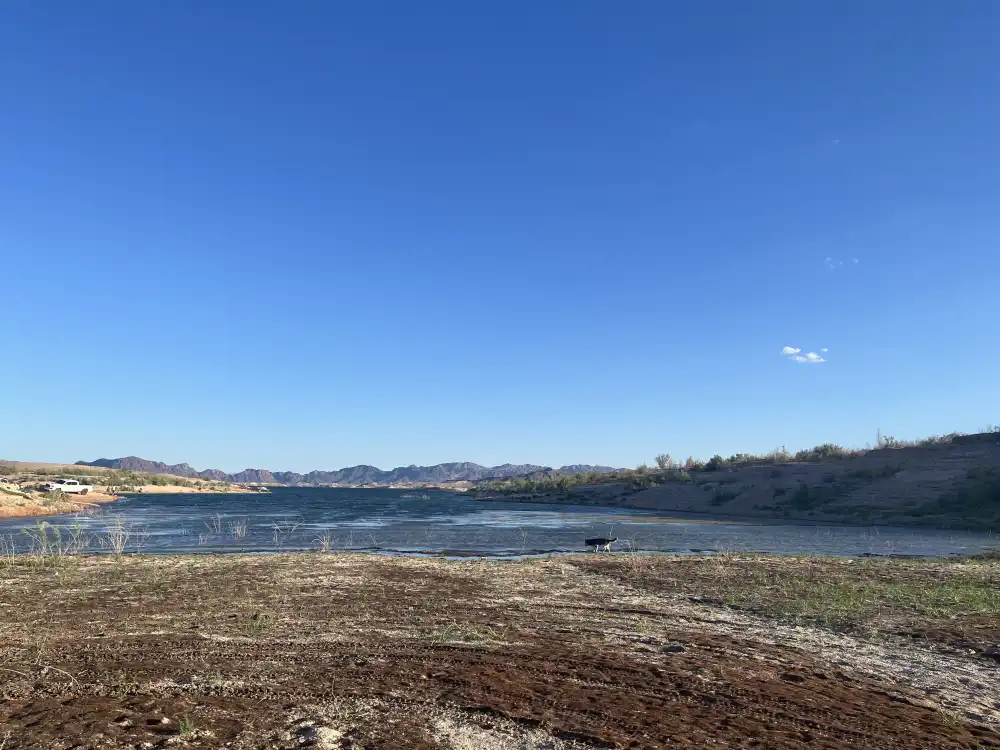
I circled back around and went off to the left side of the road to find a better spot. I saw what looked like solid ground and trail tracks leading down to better open parts of the cove. Nothing my Jeep Rubicon can’t handle… So I continued on, right into a muddy mucky mess.
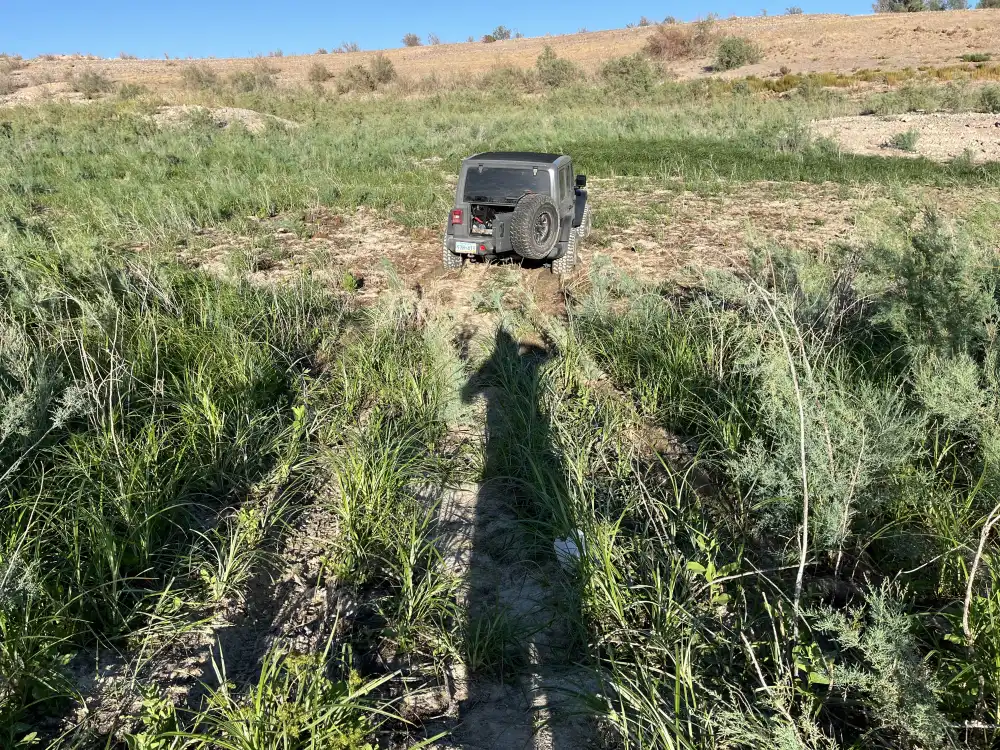
Really. It looked dry from up close in the driver seat. If you see green in the desert. Think water. It sounds like common sense, but this, I was lacking today–like many other days of my life. I looked down and noticed I was still in two wheel drive. Surely 4L would get me unstuck. Right?
Don’t disable a bad second battery
Yes. Newer Jeeps have two batteries. And yes. You need both of them for the Jeep to properly function. The second battery on my Rubicon went bad several months ago, so I followed a youtube video that shows you how to disable it by removing the negative terminal and removing fuse F42 PCR CTRL FEED (ESS)* and just like this gentleman’s facial gesture below, I too now felt that same frustration. Not from the annoying auto start stop light, but because his video neglected to mention that you actually need this second battery and disabling it is a very bad idea. It still drains your main battery, it is used for 4 wheel drive, and the entire Jeep can go haywire with low battery voltage from shorting out the transmission to flashing lights and windshield wipers moving by themselves. Again, sometimes my common sense evaporates…
Now I need help. Good thing there are so many people in this cove. I go from couple to campsite only to find out that not a single person was capable or willing to help me get unstuck. And even if they did help me out, my Jeep wouldn’t start. The battery failed when I tried to engage 4L and it shorted out the transmission. I look down at my phone. 30% battery life. I’m 10 miles from the closed Lake Mead payment booth at 5pm on a Friday night. The nearest ranger station was 20 miles away at Boulder Beach. It was 100 degrees outside and I had two gallons of water and some snacks with no phone charger. I started to panic.
365 Towing – Las Vegas
I called several towing places that serviced Lake Mead. The first guy answered but said it would cost approximately $700 to come out. I couldn’t get ahold of anyone else, so I asked them to please hurry. After all, my phone battery was dying, my Jeep battery was dead and I didn’t want to abandon my Jeep and hike out with my dog. Ramon from 365 Towing called me. It was one of the first few numbers that I tried. He said that he would be out within the hour and would only charge me $450, including gas milage for towing me to the dealership in Las Vegas. I still didn’t hear back from the other companies driver, so I rolled the dice and decided to cancel the other tow and have Ramon come help me.
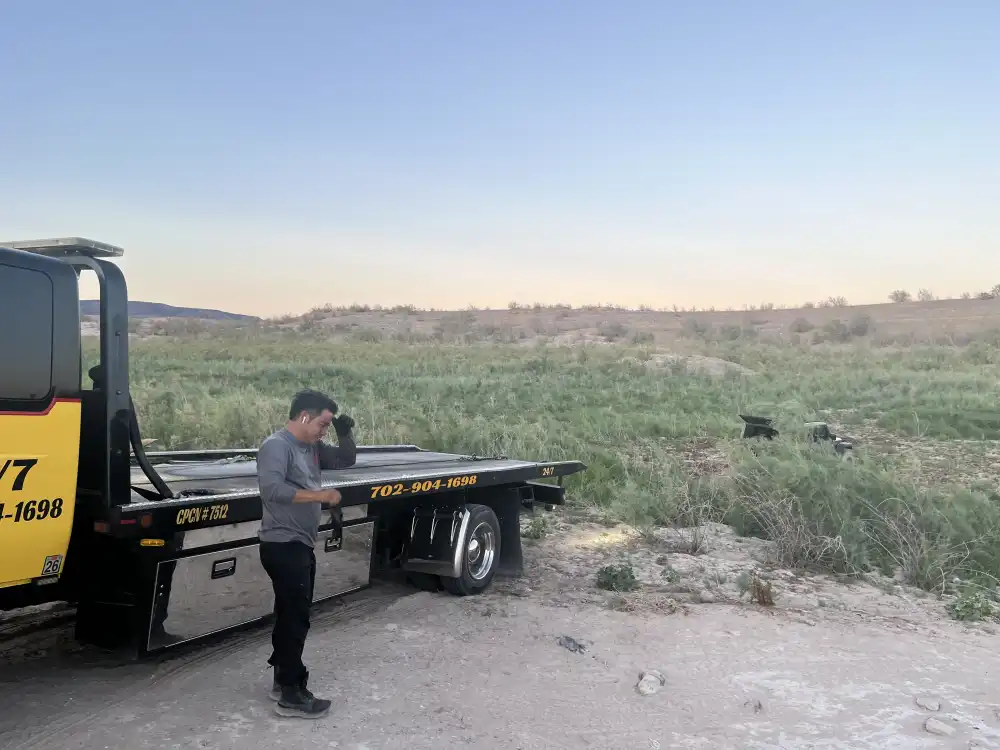
He showed up fast! He was almost at Lake Mead when the other companies driver called to say they were about to leave Las Vegas. He gave me a bottle of water. Until then, the thought didn’t even cross my mind about how I was to transport Panda. It wasn’t till then that I asked Ramon if it was okay for my dog to ride in the cab with us. He stated that he was pet friendly, which relieved my anxiety.

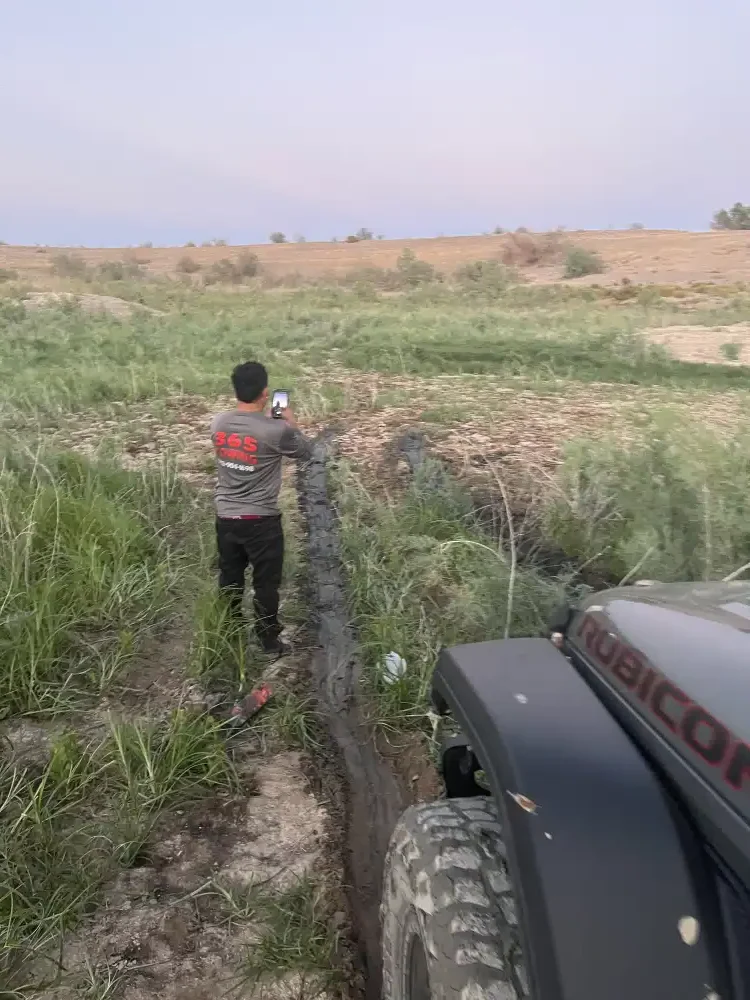
I was hooked up and on the flat bed truck in no time, ready to leave Lake Mead for the foreseeable future. It was getting dark and my phone battery had dropped to red. I felt like I had made a new friend, especially since he was willing to trade my website skills for his tow service.
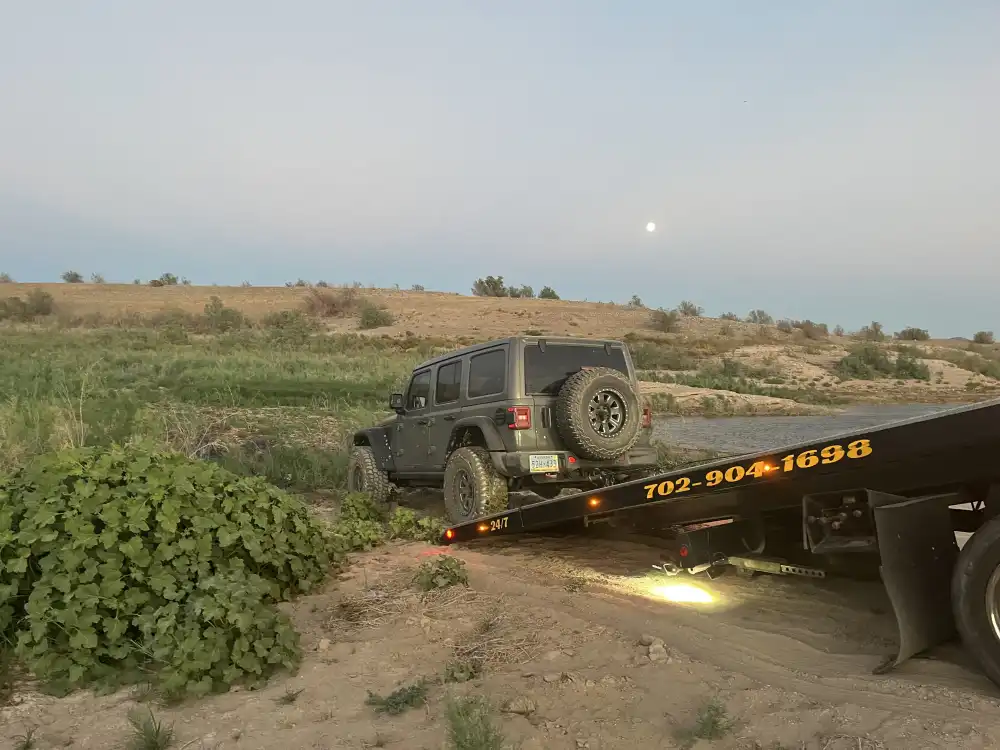
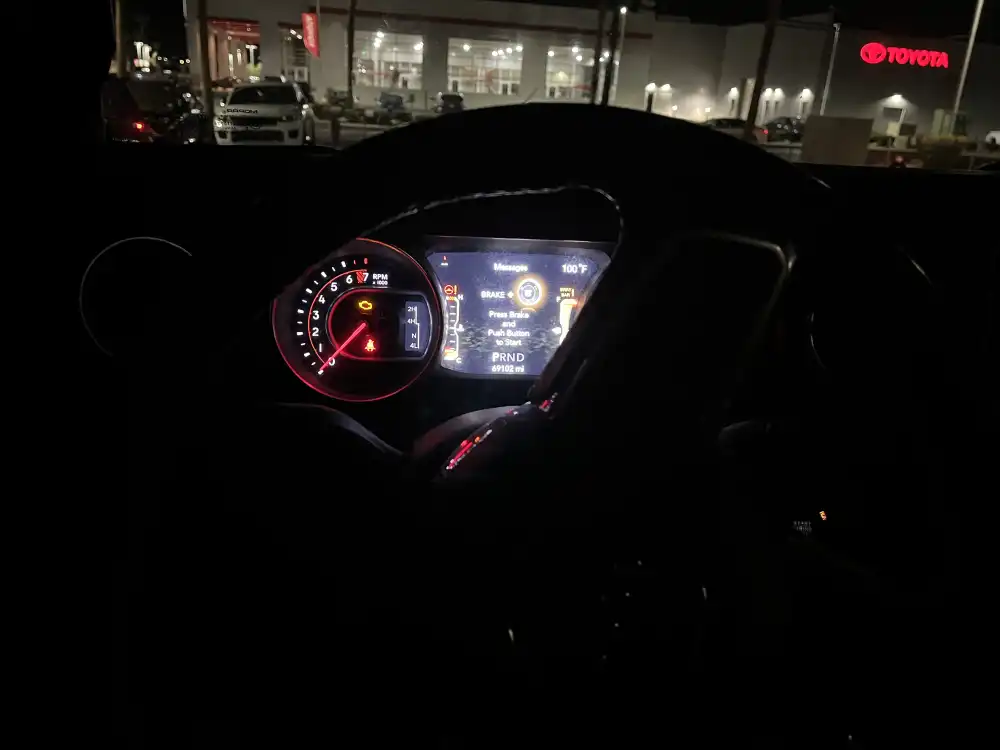
I got home in time to set 365 Towing up with a brand new website at: https://365towing.vegas – I even had time to take Panda on a late night walk afterwards.
this park watered from lake mead
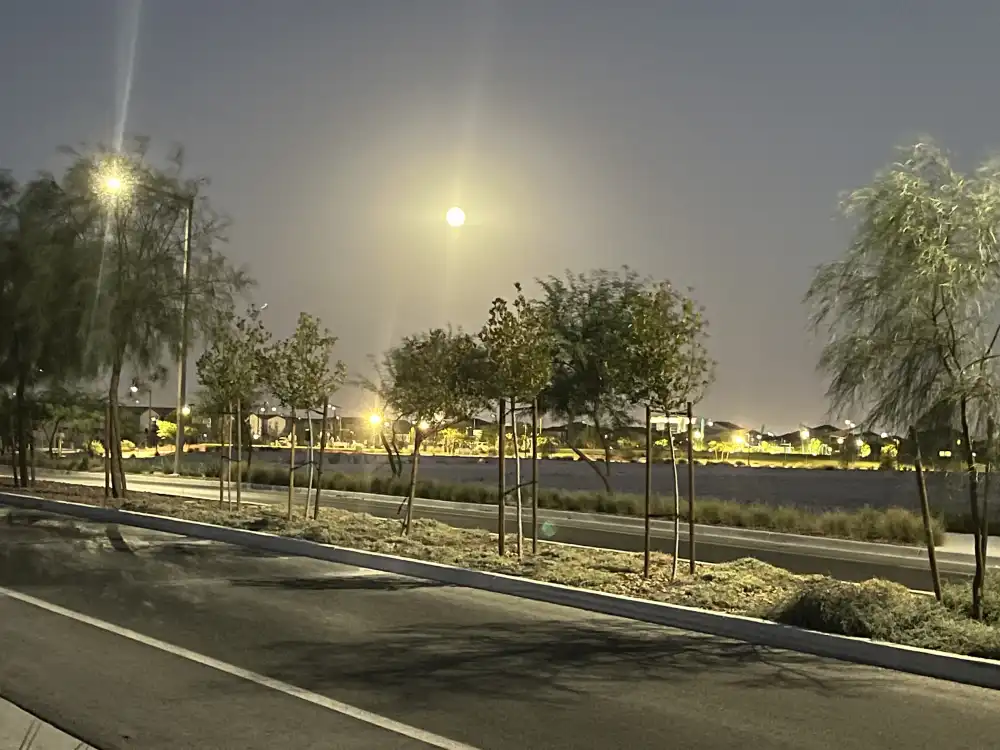
So I guess the day worked out in its own way. I met a friend, we both helped each other trade services. Panda saw Lake Mead. I realized I don’t care for Crawdad Cove. And I saw Lake Mead one last time before all the water is used up for desert agriculture, golf courses, dwellings, parks, lawns and businesses.
Crawdad Cove, Lake Mead, Nevada
Tucked away on the western edge of Lake Mead, Crawdad Cove is one of those hidden desert escapes that still feels untouched. Located just southeast of Boulder City, this quiet shoreline cove offers a rugged and peaceful alternative to the busier marinas nearby. It’s a favorite among locals who want to get close to the water without the crowds — or the noise.
The Experience
Expect solitude and stunning desert scenery. The cove slopes gently into Lake Mead’s blue water, framed by rocky outcrops and scrub-covered hills that glow gold in late afternoon light. Despite its beauty, this is an undeveloped area — no restrooms, no picnic tables, and no marked campsites. You bring what you need, and you pack it all back out.
The name “Crawdad Cove” comes from the crayfish that thrive in the shallow, rocky waters near shore. On calm mornings, you’ll spot schools of fish darting below the surface and the occasional heron or osprey gliding overhead.
Getting There
Reaching Crawdad Cove is part of the adventure. From Las Vegas, drive toward Hoover Dam on U.S. Highway 93, then enter Lake Mead National Recreation Area via Lakeshore Road. A few miles south of Boulder Beach, turn onto Crawdad Cove Road — a long, dusty dirt path that winds through the desert for several miles before dropping toward the lake.
A high-clearance or 4WD vehicle is recommended, especially after heavy rain. The final stretch can be rough but rewarding — when the lake appears at the end of the trail, it feels like discovering your own private beach.
Coordinates: 36°07′13.3″ N, 114°47′56.6″ W
What to Bring
- Water and shade — There’s no natural cover, and summer temperatures can exceed 105°F.
- Trash bags — Leave no trace; it’s a pristine spot worth keeping that way.
- Maps downloaded offline — Cell service is unreliable once you leave the paved roads.
- Fishing gear or paddleboard — The calm, shallow waters make it a great launch spot.
- Camera — The sunsets over the distant hills are pure Nevada magic.
Best Time to Visit
Spring and fall are ideal. The weather is warm but manageable, and the desert landscape is at its most photogenic. Early morning and sunset are particularly peaceful, with soft light and cooler temperatures.
Warning
In the coves and shallow waters of Lake Mead, especially during the hot summer months, there have been rare but documented cases of a brain-eating amoeba known as Naegleria fowleri. While extremely uncommon, it’s important for visitors — especially those swimming, diving, or wading in warm freshwater — to understand what it is, how infections occur, and when to seek medical attention.
Understanding the Risk
Naegleria fowleri is a microscopic amoeba that lives naturally in warm freshwater, including lakes, rivers, and hot springs. It thrives when water temperatures rise above 80°F (27°C), which often happens in shallow coves and still areas of Lake Mead during the peak of summer.
Infection is very rare, but it can occur when contaminated water enters the body through the nose — usually during activities like diving, jumping, or swimming underwater. The amoeba travels up the nasal passage to the brain, causing a condition called Primary Amebic Meningoencephalitis (PAM), which is almost always fatal if not treated immediately.
It’s critical to understand that Naegleria fowleri cannot infect you by drinking water or through normal skin contact — it only poses a risk if water is forced up the nose.
Reducing Risk While Swimming
- Avoid submerging your head or jumping forcefully into warm, shallow water.
- Use nose clips or hold your nose shut when diving or swimming underwater.
- Avoid stirring up sediment in shallow or stagnant areas.
- Swim in deeper, cooler parts of the lake where the water temperature is lower.
When to Seek Medical Assistance
Symptoms of Naegleria fowleri infection typically begin 1–12 days after exposure, often resembling bacterial meningitis at first. Seek immediate emergency medical attention if you or someone in your group develops the following symptoms after swimming in warm freshwater:
- Sudden severe headache
- Fever, nausea, or vomiting
- Neck stiffness or sensitivity to light
- Confusion, loss of balance, or seizures
The illness progresses rapidly, often within days, so early detection and treatment are critical. If you’ve recently been swimming in warm freshwater and have any of these symptoms, tell medical staff about your exposure — this detail can guide doctors to consider Naegleria fowleri as a possible cause.
Perspective
Hundreds of thousands of people swim in Lake Mead each year, yet Naegleria fowleri infections remain extremely rare. Being cautious, especially during high temperatures and in shallow coves, is the best way to enjoy the lake safely.
Quick Facts
- Lat/Lng: 36.120367, -114.799066
- Nearest Town: Henderson or Boulder City, NV (~20 miles)
- Park Entry Fee: Required for Lake Mead National Recreation Area (per vehicle or valid park pass)
- Activities: Swimming, boating, paddleboarding, kayaking, dispersed camping, fishing, off-roading, stargazing
